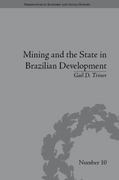Help in answering the questions below. Provide explanations where necessary.
1.Suppose commercial banks in Canada are required to maintain a reserve requirement equal to 20% of deposits. Also, assume that these banks do not hold any excess reserves.
a. If the Bank of Canada sells $2 million of government bonds, what is the effect on Canada's reserves and money supply? (4 marks)
b. Now suppose the Bank of Canada lowers the reserve requirement to 5%, but the commercial banks choose to hold another 5% of deposits as an excess reserve.
(i)Why might banks do so? (2 marks)
(ii)What is the overall change in the money multiplier and the money supply as a result of these actions? (4 marks)
2.
The share price, in pence, of a certain company is monitored over an 8-year period. The results are shown in the table below: Time (years) 0 2 3 4 5 6 7 Price 100 131 183 247 330 454 601 819 1,095 [(x, -7)2 =60 _();-7)2 =925,262 [(x; - F)(); - V)=7,087 An actuary fits the following simple linear regression model to the data: 1 = a+Bx; te; i=0,1,...,8 where {e; ) are independent normal random variables with mean zero and variance o-. (i) Determine the fitted regression line in which the price is modelled as the response and the time as an explanatory variable. [2] (ii) Obtain a 99% confidence interval for: (a) . the true underlying slope parameter (b) o' , the true underlying error variance. [5] (iii) (a) State the "total sum of squares" and calculate its partition into the "regression sum of squares" and the "residual sum of squares". (b) Use the values in part (iii)(a) to calculate the "proportion of variability explained by the model" and comment on the result. [5] (iv) The actuary decides to check the fit of the model by calculating the residuals. (a) Complete the table of residuals (rounding to the nearest integer): Time (years) 0 2 3 4 5 6 7 8 Residual 132 -21 -75 -104 -75 25 (b) Use a dotplot of the residuals to comment on the assumption of normality. (c) Plot the residuals against time and hence comment on the appropriateness of the linear model. [7] [Total 19]The Chevalier de Mere, a seventeenth century gambler, thought that it paid to bet evens on the event: A : you will get one or more sixes when four unbiased dice are thrown In other words, the Chevalier thought that P(A) > 1/2. (i) (a) Show that the probability of this event occurring is, in fact, 0.5177. (b) The experiment of throwing four unbiased dice is performed 10 times and results in the event A occurring 8 times. (1) Write down an equation which must be satisfied by PL, a lower 95% confidence limit for p = P(A). (2) Verify that pz = 0.493 satisfies this equation. (3) Comment on this value of pz relative to the true value of p as specified in part (i)(a). [6] (ii) The experiment of throwing four unbiased dice is performed 1,000 times and results in the event A occurring Y times. (a) Write down a large sample expression for Pz, a lower 95% confidence limit for p = P(A). (b) Determine how large Y would have to be for p, to be greater than 1/2. (c) Using the true value of p as specified in part (i), calculate the probability that pz will, in fact, be greater than 1/2. [8] (iii) For the situation where the experiment is performed 10,000 times: (a) repeat part (ii)(b) (b) repeat part (ii)(c) and comment briefly on any difference between your two answers. [6] [Total 20]








